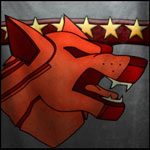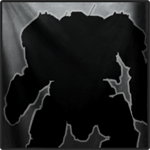Hrrm, more contentious than I thought it would be. Alright starting from the top.
Quote
How in the Hell would you know what I want?
I wouldn't, because you aren't articulating your point well. What is it about tabletop that you don't want translated into the Sim? If you completely disregard the source material you might as well set the game in its own universe, much as ME is Bioware's own Star Wars universe.
What is it you dislike about the tabletop rules, specifically?
Quote
The tabletoppers talk about realism but they don't want realism. They want abstraction. That's what tabletop is. Abstraction instead of realism.
Hardly. There is a reason I asked if you've ever shot a gun IRL; people who actually shoot understand the degree of complexity that goes into a long range shot better than people that don't. Also people that hunt tend to understand the difference between target shooting and longrange marksmanship and, well, real world applications of firearms better than people that don't. Off the top of my head, and knowing I will miss some, the variables that impact long range marksmanship against static targets are: Temperature, wind (and differences between you and the target), environmental conditions (Snow, rain, fog), intervening obsticals, temperature of the barrel of the gun, stiffness of the barrel of the gun, fouling in the barrel, design of the bullet (Meplat, ballistic coefficient, weight), velocity of the bullet, and a whole bunch of internal ballistics that would confuse most people for me to point out. This is one of the reasons that VERY VERY few people are any good at marksmanship past ~500 yards, regardless of the quality of their equipment. All of this and MORE apply to the weapons in mechwarrior.
Quote
the sim ... not-crowd. We sim-types don't make up a big enough demographic to be described as a "crowd." That's why there's never been, and never will be, a reasonably realistic mech simulator game.
I'd count myself in the Sim crowd. After all, I'm a big fan of IL-2 and the X series of space sims. Hard to get more "hardcore sim" than those. I'd actually love for MWO to get to that level of emulation, but TBH it is far beyond the capabilities of the target audiences' computers.
Quote
The stories. I like playing the stories. The great MechWarriors who nail shot after shot, accurate as can be. Yes, the lasers spread, some shots are right on target, whereas others are quickly fired and the Warrior is happy if the shot even hits. I do not want to be joe shmow, who just fires shots, hoping they hit. I want to be deadly accurate
That's all well and good for singleplayer, but in multiplayer not everyone gets to be a unique and beautiful snowflake.
Quote
In other words, I want a 100% realistic simulation of what piloting a battlemech would be like if battlemechs existed in the real world. That means real physics--something that no Mechwarrior game has come close to and the tabletop is even farther from. Arbitrary made-up rules which defy physics does not increase realism
Err. . . My senior project for my EE degree involved laser arrays and the tweaks and focusing there of. At laserpointer energies you don't have to deal with bloom. At weaponized levels you do. Bloom is essentially the laser itself heating the atmosphere to the point that it changes the optical properties of the atmosphere between yourself and the target. IE the laser heats the air which causes it to bend the laser beam. There are two known techniques for overcoming bloom: First, shrink the duration of the laser pulse so that the atmosphere doesn't have time to warp the shot too badly. Second, use a continuous beam and make adjustments based on observation of the bending of the beam (Adaptive optics). The first is what fits best with the BT Canon, as well as what most RL weaponized lasers attempt. The point? Lasers are already randomized, and it is a chaotic interaction. It is not predictable. It doesn't really matter what you want to use to randomize, be it a RNG, a very very high level simulation, or a dice roll, the beam has divergence due to ACTUAL PHYSICS.
 J Echo, on 15 November 2011 - 05:25 PM, said:
J Echo, on 15 November 2011 - 05:25 PM, said:























